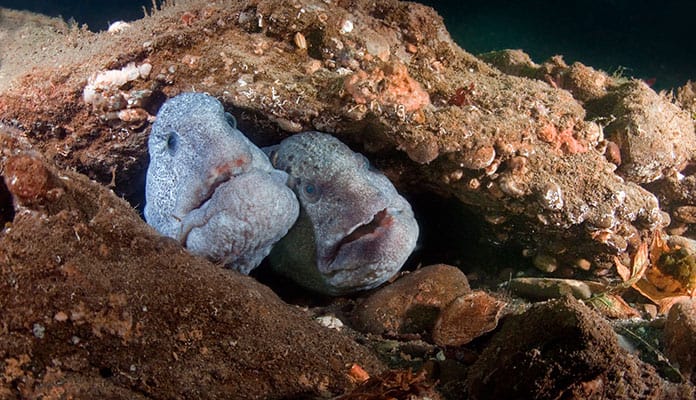
There are many species of marine animals that have a bad reputation for humans. Eels are often seen as dangerous and aggressive fish that should be avoided. In most cases, this is very untrue. These are also some of the coolest types of fish you’ll see when you’re diving or snorkeling.
For another thrill, be sure to read about the types of stingrays you may see in the water.
There are many different types of eels floating through our waters. To help you have a deeper appreciation for these misunderstood creatures, we have listed our favorite types below.
Types Of Eels
Snyder’s Moray
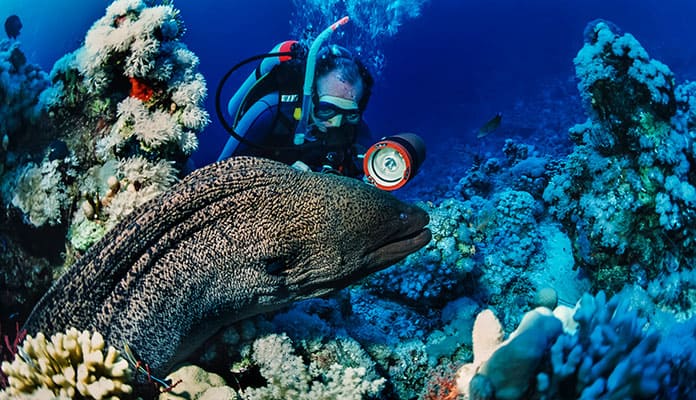 This beautiful eel is native to the Pacific Ocean. Named after the person that discovered it, Snyder, this eel was first spotted in 1904. Also called the Finespot Moray due to its small spotted appearance this type of eel is representative of many subspecies of eels.
This beautiful eel is native to the Pacific Ocean. Named after the person that discovered it, Snyder, this eel was first spotted in 1904. Also called the Finespot Moray due to its small spotted appearance this type of eel is representative of many subspecies of eels.
Giant Moray
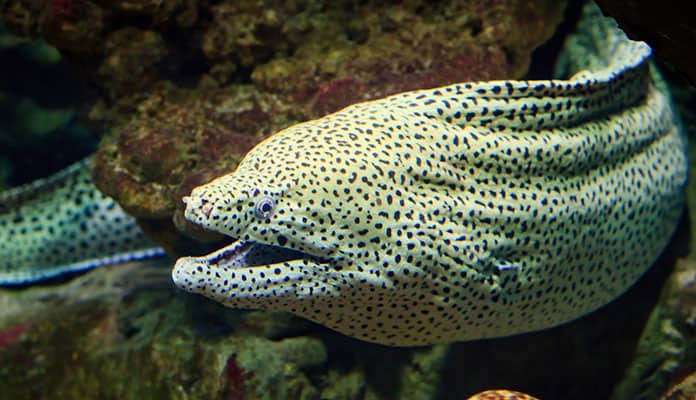 This type of Moray eel prefers the warmer waters found in the Indo-Pacific region. These large eels can stretch up to 9.8 feet in length and weigh up to 65 pounds. Their long and heavy body is met with very small eyes that leave them with poor eyesight. Adults have spotted black leopard specks and move slick through the water. These carnivorous creatures feed mainly on fish, crustaceans, and smaller eels.
This type of Moray eel prefers the warmer waters found in the Indo-Pacific region. These large eels can stretch up to 9.8 feet in length and weigh up to 65 pounds. Their long and heavy body is met with very small eyes that leave them with poor eyesight. Adults have spotted black leopard specks and move slick through the water. These carnivorous creatures feed mainly on fish, crustaceans, and smaller eels.
Slender Giant Moray
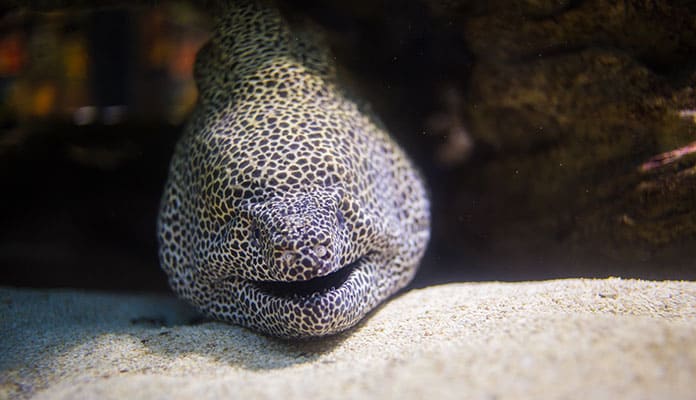 The Slender Giant Moray is the largest of the Moray eels. Growing to an impressive 13 feet in length these eels are also found in the Indo-Pacific Ocean, most commonly spotted in the west.
The Slender Giant Moray is the largest of the Moray eels. Growing to an impressive 13 feet in length these eels are also found in the Indo-Pacific Ocean, most commonly spotted in the west.
Snowflake Moray
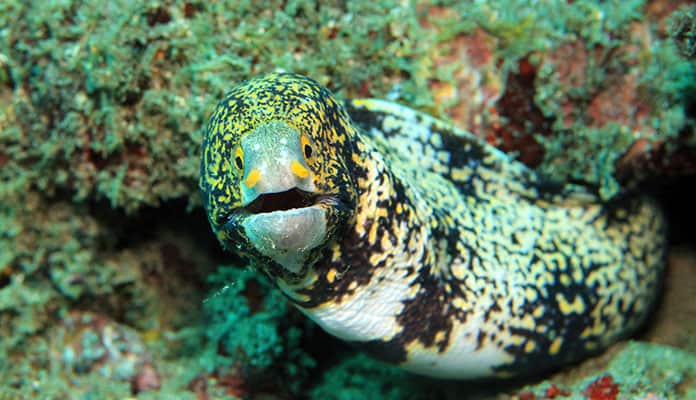 Another eel that prefers the warmer water, the Snowflake Moray lives in the Indo-Pacific area and is commonly spotted by both snorkelers and divers. The beautiful bright yellow and purple color makes this eel easy to spot. Commonly staying between 7 and 100 feet deep into the water this eel also goes by the name of Clouded Moray. Feeding mostly on crustaceans and the occasional smaller fish this eel grows to about 20 inches long.
Another eel that prefers the warmer water, the Snowflake Moray lives in the Indo-Pacific area and is commonly spotted by both snorkelers and divers. The beautiful bright yellow and purple color makes this eel easy to spot. Commonly staying between 7 and 100 feet deep into the water this eel also goes by the name of Clouded Moray. Feeding mostly on crustaceans and the occasional smaller fish this eel grows to about 20 inches long.
Zebra Moray
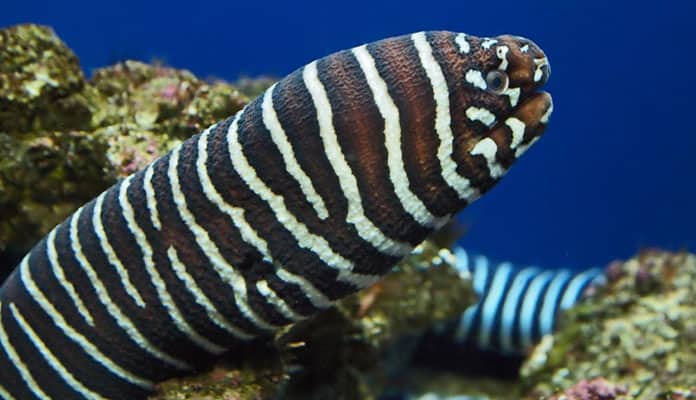 It’s no surprise that the Zebra Moray has stripes that make it look like a zebra. It feeds on sea urchins, crustaceans, and mollusks in the Indo-Pacific ocean around Madagascar and Polynesia and Japan to New Caledonia.
It’s no surprise that the Zebra Moray has stripes that make it look like a zebra. It feeds on sea urchins, crustaceans, and mollusks in the Indo-Pacific ocean around Madagascar and Polynesia and Japan to New Caledonia.
Fimbriated Moray
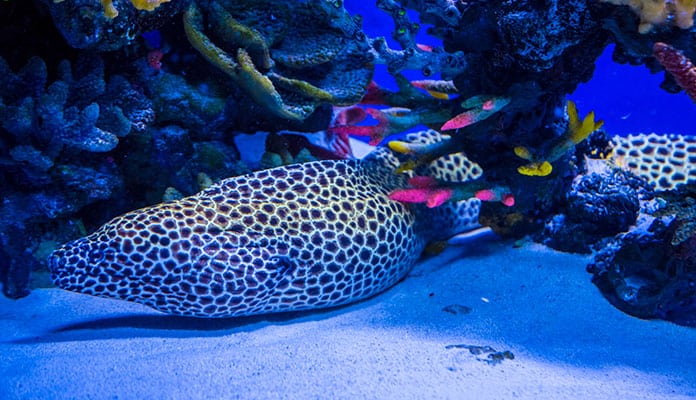 This may be the most colorful of all the eels. It has a yellow and green look with many black dots across its body. It is predominantly found in the Indo-Pacific ocean area and will be found in crevasses in between rocks and coral. It feeds on small fish which it catches with its largemouth. It can grow to a length of around 30 inches (80 centimeters) in length and can be found in water ranging from 3 to 160 feet (1 to 50 meters) deep.
This may be the most colorful of all the eels. It has a yellow and green look with many black dots across its body. It is predominantly found in the Indo-Pacific ocean area and will be found in crevasses in between rocks and coral. It feeds on small fish which it catches with its largemouth. It can grow to a length of around 30 inches (80 centimeters) in length and can be found in water ranging from 3 to 160 feet (1 to 50 meters) deep.
You might also like: Soft Coral Identification: 6 Types Of Soft Coral
Whitespotted Conger
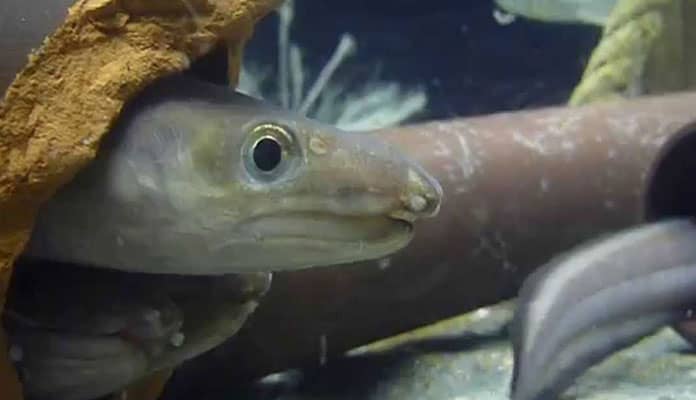 This type of eel gets its name from the white dots that line its body. It grows to around 3 feet in length (1 meter) and is usually found in the Northwest Pacific Ocean. If you run into this eel you will most likely be in shallow water with a sandy or muddy bottom.
This type of eel gets its name from the white dots that line its body. It grows to around 3 feet in length (1 meter) and is usually found in the Northwest Pacific Ocean. If you run into this eel you will most likely be in shallow water with a sandy or muddy bottom.
Grey Conger
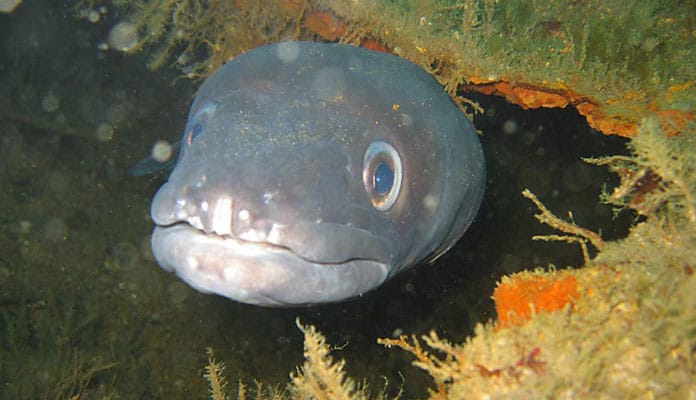 These may be the smallest of all the eels. They are usually seen at around 30 inches but can grow to a maximum length of around 60 inches in ideal conditions. You don’t have to worry about this being aggressive as it predominantly eats finfish and lives at around 200 to 400 meters deep (650 to 1310 feet).
These may be the smallest of all the eels. They are usually seen at around 30 inches but can grow to a maximum length of around 60 inches in ideal conditions. You don’t have to worry about this being aggressive as it predominantly eats finfish and lives at around 200 to 400 meters deep (650 to 1310 feet).
Longfin African Conger
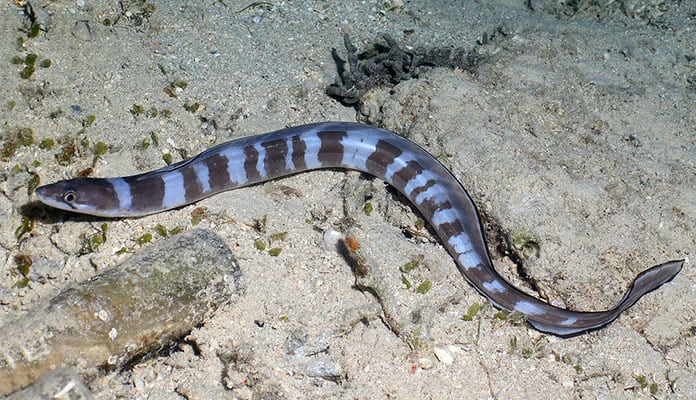 Chances are you won’t be seeing a Longfin African Conger on your next snorkel or even scuba dive. They live at a staggering depth of 260+ feet deep. They have a spotted body that can grow up to 4.5 feet long. This eel also typically lives in the Indo-Pacific region.
Chances are you won’t be seeing a Longfin African Conger on your next snorkel or even scuba dive. They live at a staggering depth of 260+ feet deep. They have a spotted body that can grow up to 4.5 feet long. This eel also typically lives in the Indo-Pacific region.
Beach Conger
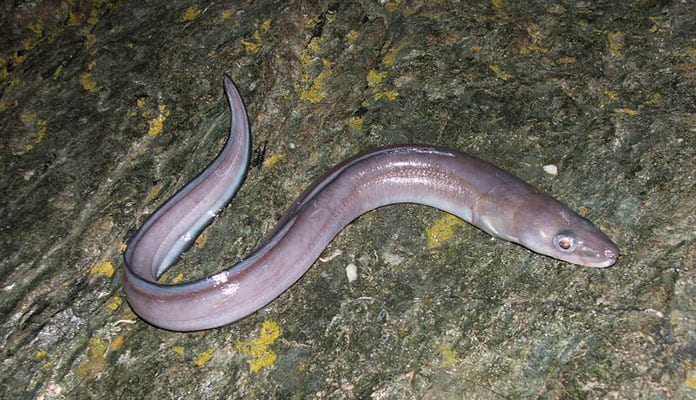 If you were to see this type of eel you would think it was a snake under the water. It has a long, up to 4 foot, the body that glistens as they swim. This species of eel is mainly found in the Northwestern Pacific Ocean.
If you were to see this type of eel you would think it was a snake under the water. It has a long, up to 4 foot, the body that glistens as they swim. This species of eel is mainly found in the Northwestern Pacific Ocean.
Globo Surf Overview
Eels are some of the most interesting marine life you’ll see. The way they move through the water will mesmerize you. Being able to identify the different types of eels will give you confidence in your next time in the water. Knowing whether or not an eel is dangerous will put your mind at rest and allow you to enjoy your time.

